New Stunning Entries Of The 2016 National Geographic Nature Photographer Of The Year Contest
The 2016 National Geographic Nature Photographer of the Year contest is accepting entries in one or all of four categories: Landscape, Environmental Issues, Action and Animal Portraits. The grand-prize winner will receive a 10-day trip for two to the Galápagos with National Geographic Expeditions and two 15-minute image portfolio reviews with National Geographic photo editors.
Empire Rising
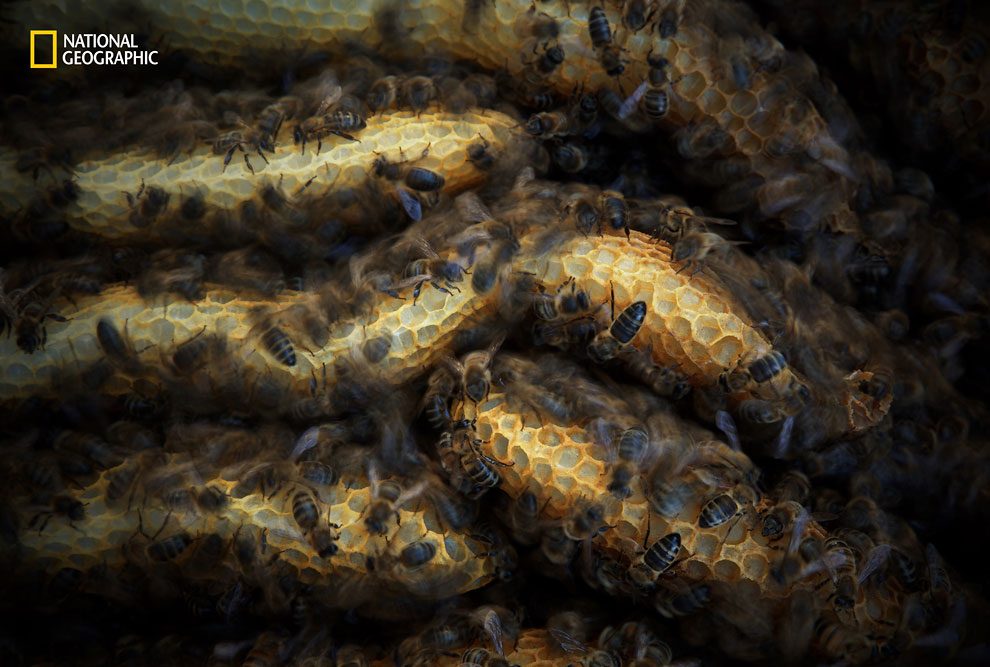
Built in complete darkness, a complex city is being constructed. A wild swarm of Honeybees (Apis mellifera) arriving in the spring, is developing natural wax comb formations to support the colony’s future larvae, and food storage. When this colony is at it’s strongest, it will eventually divide. The majority of the bees swarming to a new location with the queen and begin the process of reproducing all over again, thus spreading their genes farther. (Photo and Caption by Sam Morris/2016 National Geographic Nature Photographer of the Year)
More info: National Geographic Nature Photographer Of The Year
American Flowers #1
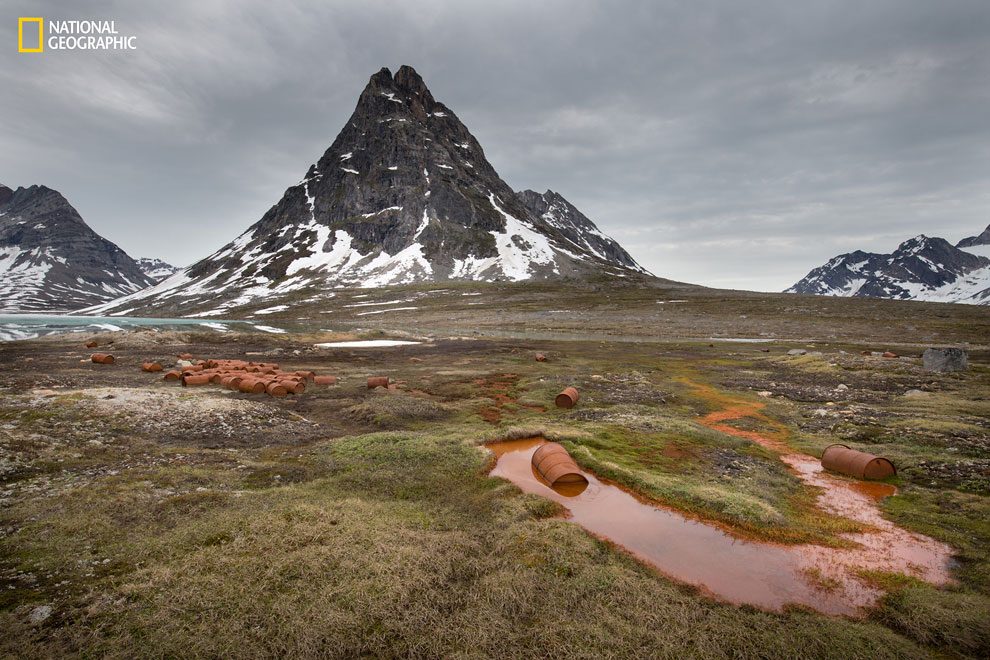
In Greenland’s pristine landscape lies a US Air Force base which was abandoned in 1947 and everything was left behind, vehicles, asbestos laced structures, and over 10,000 aviation fuel barrels. The Inuits who live in the region call the rusted remains American Flowers. I spent time over the last 2 summers camping out solo on the tundra photographing it. (Photo and Caption by Ken Bower/2016 National Geographic Nature Photographer of the Year)
The frozen pond with snow
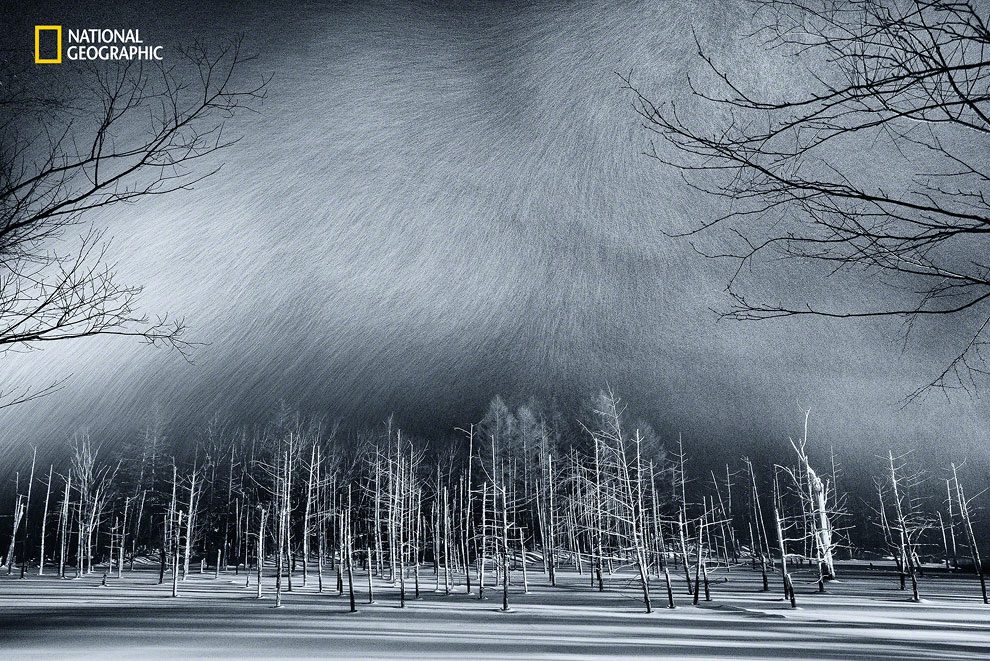
Here is an announcement regarding to the ìBlue Pondî in Hokkaido Biei-cho. The light up illumination period this year has been published. It is from 1st November 2016 to 28th February 2017. The light up illumination will be held without holidays during the mentioned period. We, all the residents who are living in Biei town, are expecting more tourists from all over the world coming to visit us this year. (Photo and Caption by Kent Shiraishi/2016 National Geographic Nature Photographer of the Year)
Mediterranean Jelly
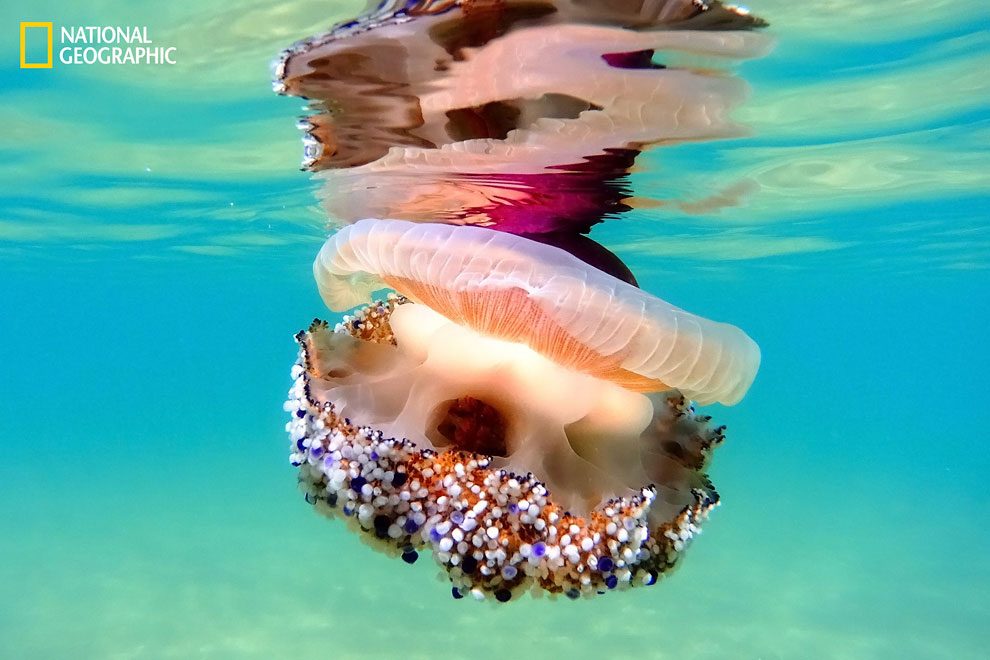
Cotylorhiza Tuberculata, aka Mediterranean Jelly or (more friendly…) Fried Egg Jelly, is pretty common throughout Mediterranean Sea. Its stings are totally harmless to humans yet its beauty is absolutely contagious. (Photo and Caption by Stefano Spezi/2016 National Geographic Nature Photographer of the Year)
Buffalo Mud Bath

An African Buffalo full of mud late in the afternoon in the Masai Mara, Kenya. A different portrait for this powerful animal. (Photo and Caption by Chris Schmid/2016 National Geographic Nature Photographer of the Year)
Confrontation
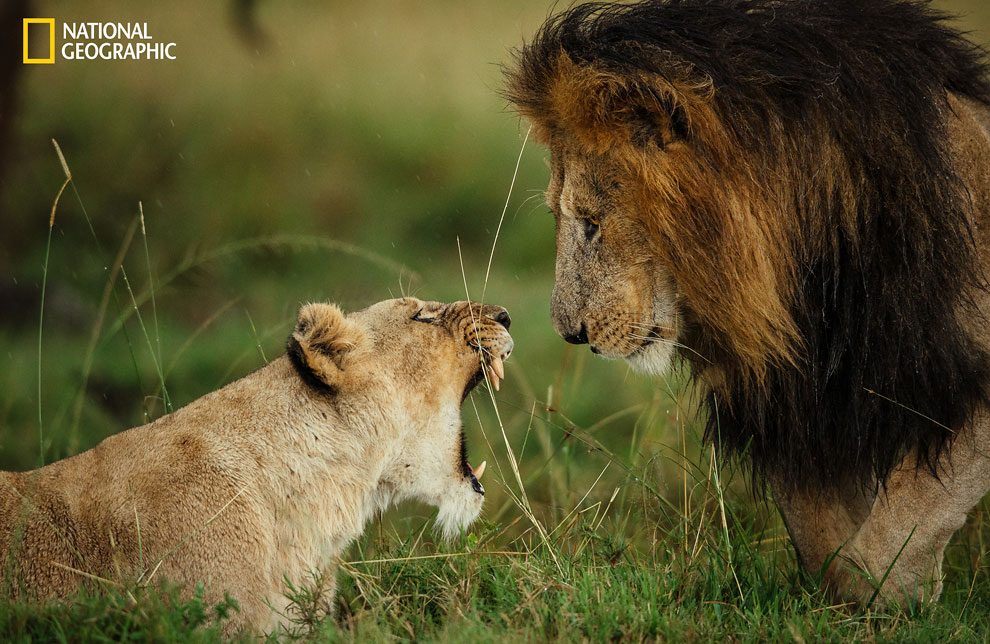
Lioness refuses the advances of the male during a prolonged courtship under a light rain in the Masai Mara, Kenya. (Photo and Caption by Chris Schmid/2016 National Geographic Nature Photographer of the Year)
Team Work
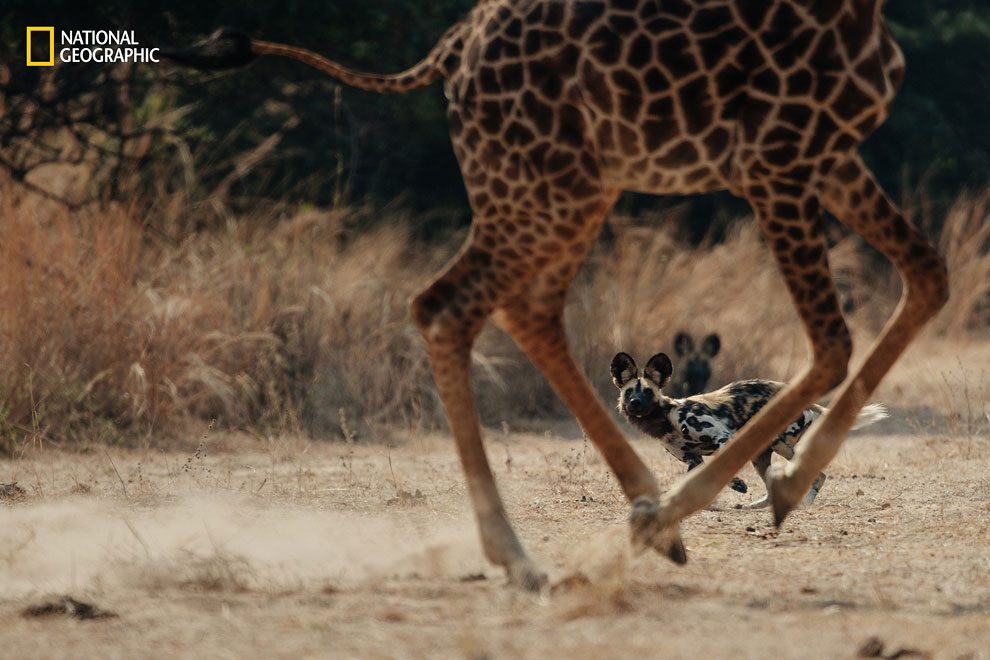
The current population of African wild dogs has been estimated at roughly 39 subpopulations containing 6,600 adults, only 1,400 of which are fully grown. The decline of these populations is ongoing, due to habitat fragmentation, human persecution, and disease outbreaks. So I feel always very lucky and fortunate to be able to spend some time next to them. We found this pack of dogs early in the morning. They were looking to make a kill. But unfortunately for them this giraffe was a way to big… (Photo and Caption by Chris Schmid/2016 National Geographic Nature Photographer of the Year)
Lucky Strike
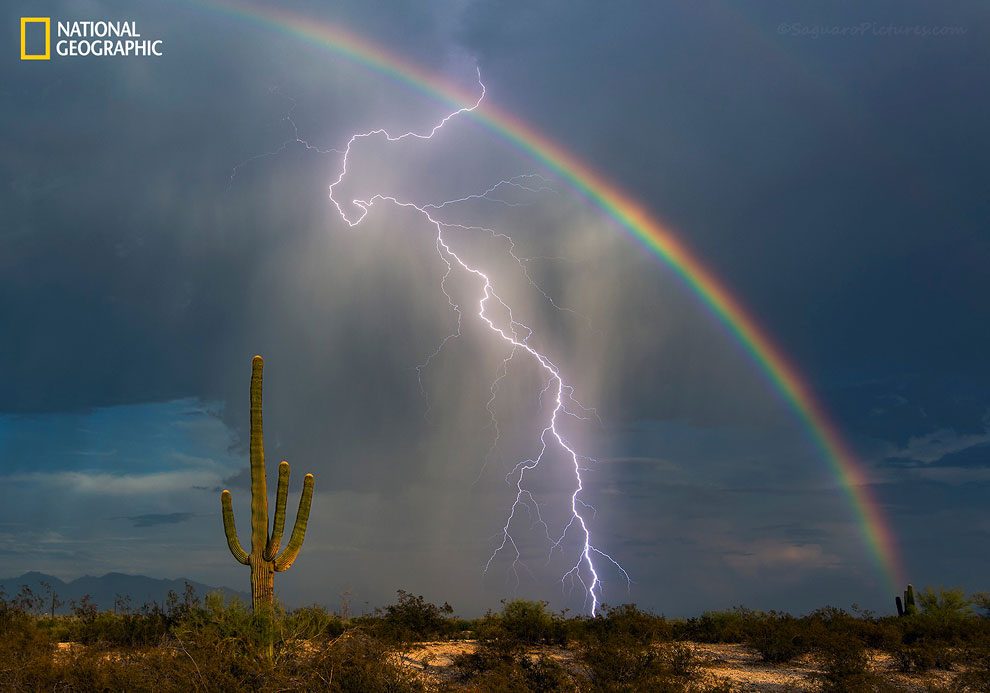
After 7 years of trying I finally got my lightning and rainbow picture. I spent the afternoon chasing storms with a pair of friends from Phoenix. After driving through a microburst on I-10, they decided to head back home. I decided to head back towards Tucson. I stopped in Marana to photograph this beautiful rainbow. It was difficult to find a spot without houses or telephone poles, but I did just in time. This lightning bolt came crashing down within minutes of setting up. (Photo and Caption by Greg McCown/2016 National Geographic Nature Photographer of the Year)
Great Horned Owl returning
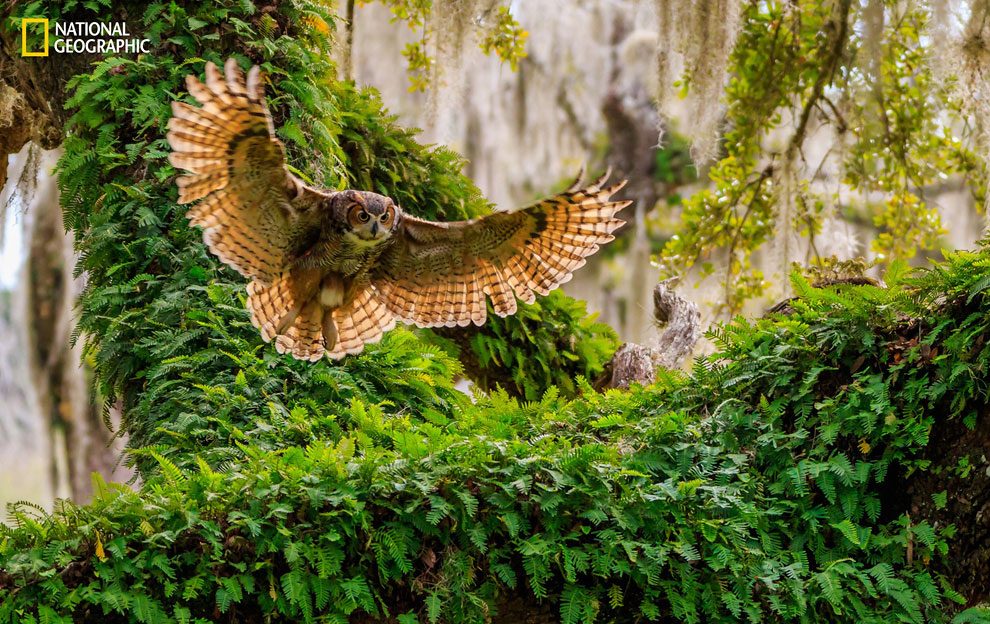
This Great horned Owl is returning to her nest in an urban area near the busy Citrus county sheriffs office where the county deputies come and go pretty much on a regular basis. As well as it be near the highway leading to the high school campus. (Photo and Caption by Robert Strickland/2016 National Geographic Nature Photographer of the Year)
Impact
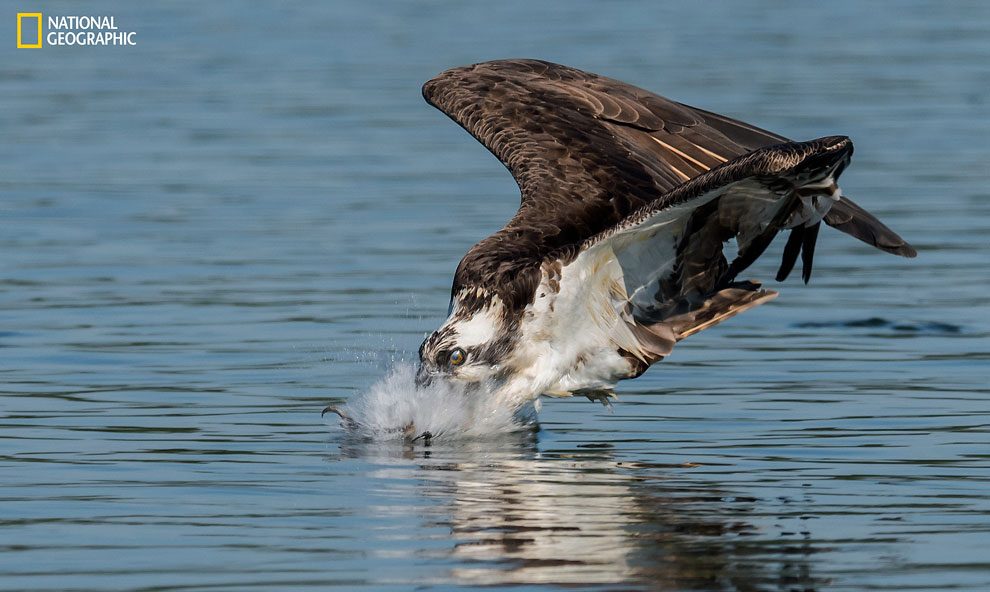
An osprey with its talons forward and nictitating membrane closed in its final moment of a dive for a fish. These skilled hunters dive at high speeds and fully immerse themselves in the water during these attacks. (Photo and Caption by Harry Collins/2016 National Geographic Nature Photographer of the Year)
Spellbound by Night
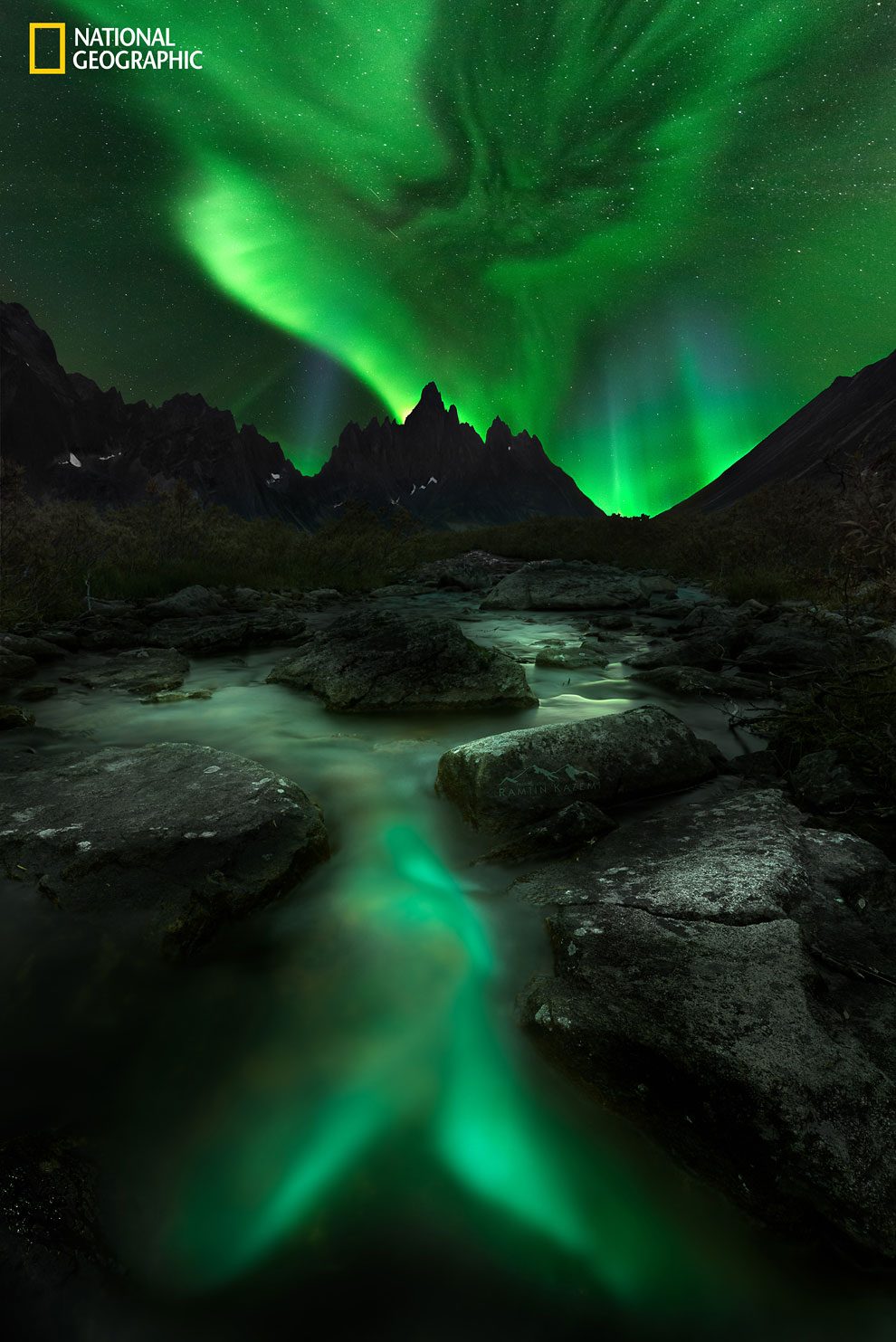
This was a very difficult and special backpacking trip into the untouched wilderness of Yukon. It was one of the most magical moments of my life to see the Lights dance above my head. (Photo and Caption by Ramtin Kazemi/2016 National Geographic Nature Photographer of the Year)
Wait and see
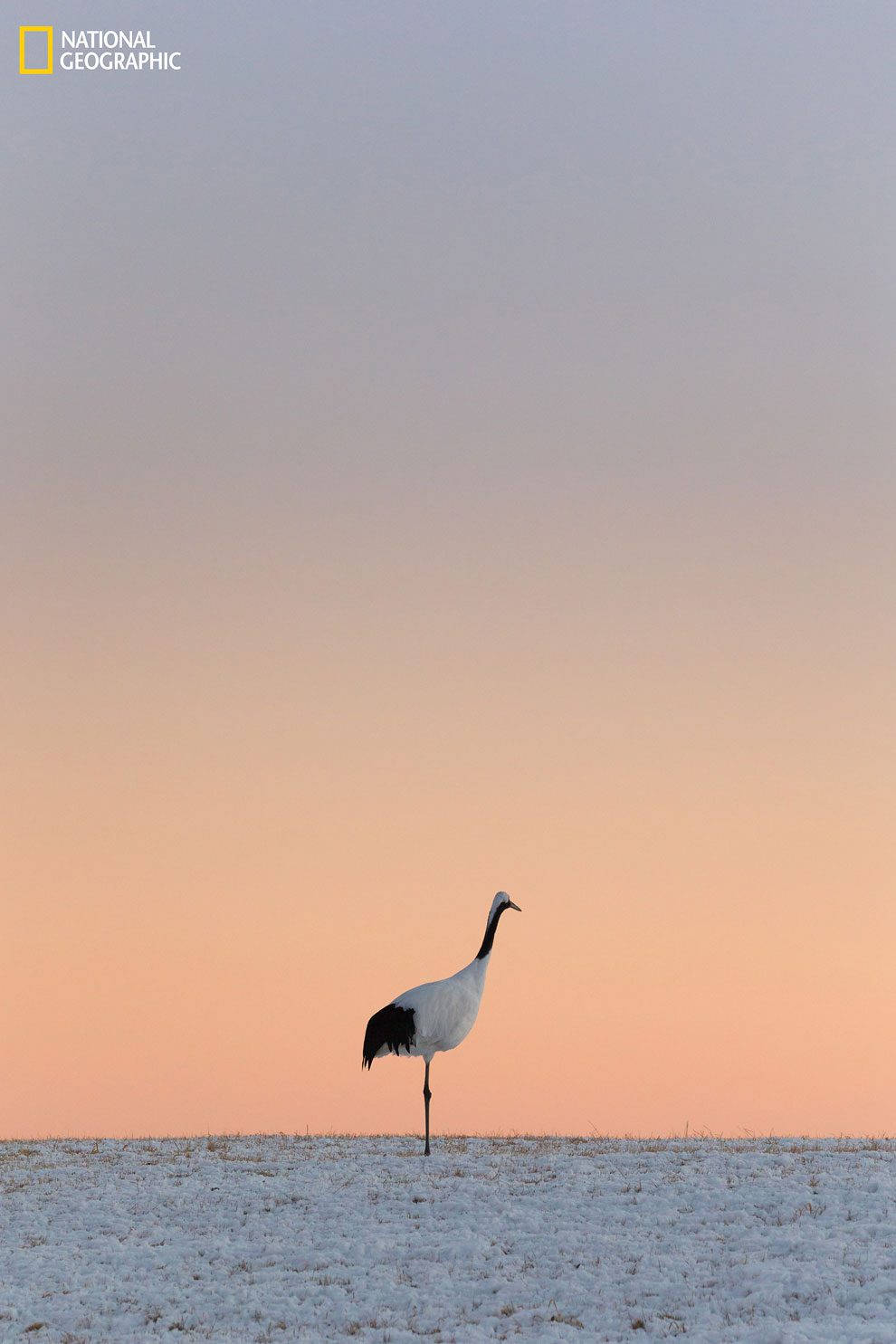
Even after the other family members have returned to all the nest, she only had to watch the day’s sunset. (Photo and Caption by Hiroshi Tanita/2016 National Geographic Nature Photographer of the Year)
Lighting Up The Galaxy
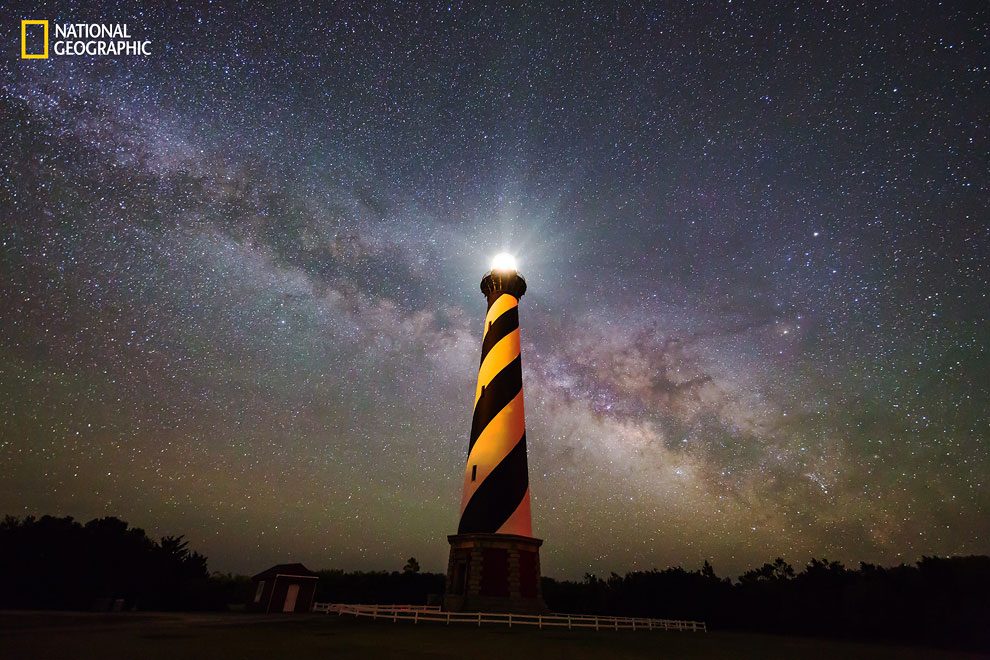
This is a time-lapse frame taken at the Cape Hatteras Lighthouse. This angle possibly has the least light pollution of any spot on the East Coast which allows the camera to capture the most possible detail. (Photo and Caption by Mike Zorger/2016 National Geographic Nature Photographer of the Year)
Territorial Hippo
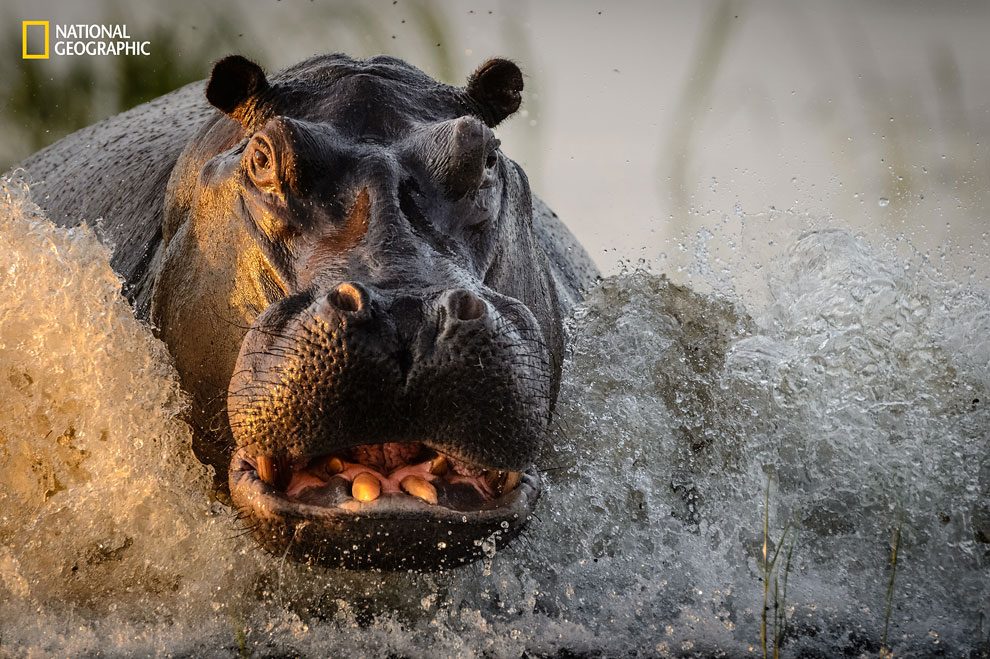
At this time of the year the water levels are high and herds of hippopotamus share the tributaries. This particular bull was very territorial and liked a mock charge whenever our boat (driven by a qualified local guide) passed his patch of the river on our daily outings. On this occasion, I pre-focused my 600mm lens and fired a few shots at a safe distance and got this golden hour shot! (Photo and Caption by Sam Kurtul/2016 National Geographic Nature Photographer of the Year)
Free Shark
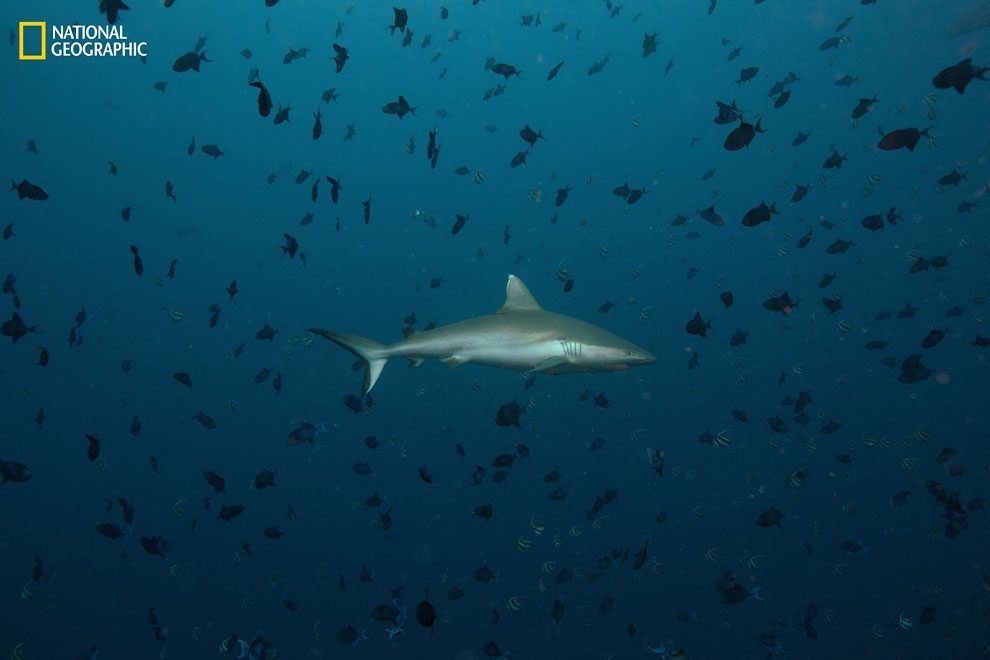
Just to capture a shark around the fish. (Photo and Caption by Allen Gu/2016 National Geographic Nature Photographer of the Year)
The Zebra and the Oxpecker
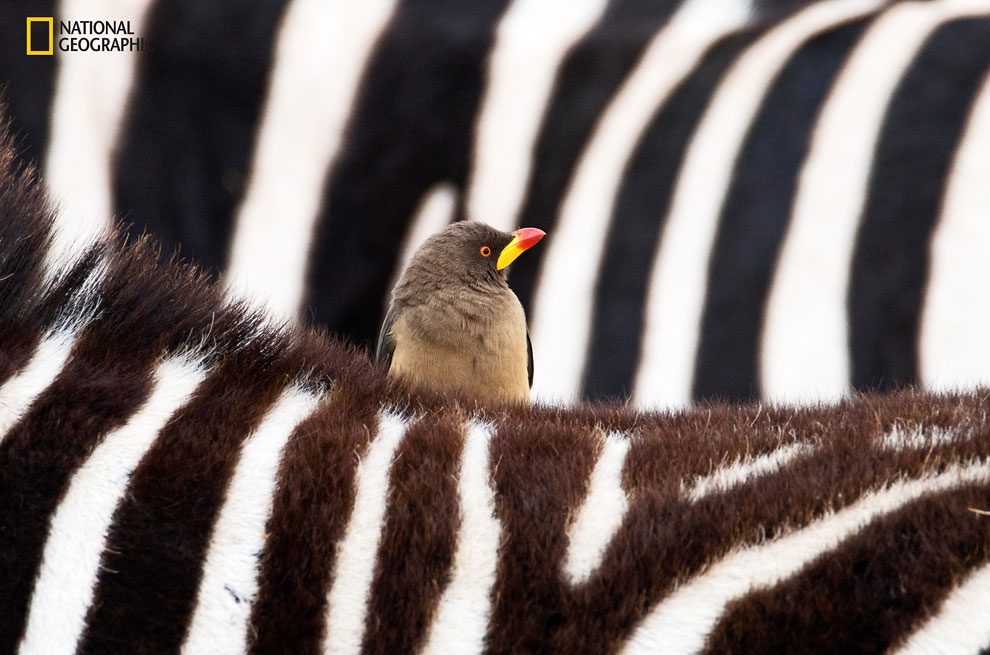
Driving by herds of zebras, I noticed the ox peckers would settle on their backs, but would fly away when they heard my car. I asked my driver to turn off the engine, and we waited. Within a few minutes, the Yellow Billed Oxpeckers returned and landed on the zebras’ backs. I looked for a nice way to “frame” the bird, and found this: between two zebras. I love how the beak pops between the lines. (Photo and Caption by YARON SCHMID/2016 National Geographic Nature Photographer of the Year)
From above
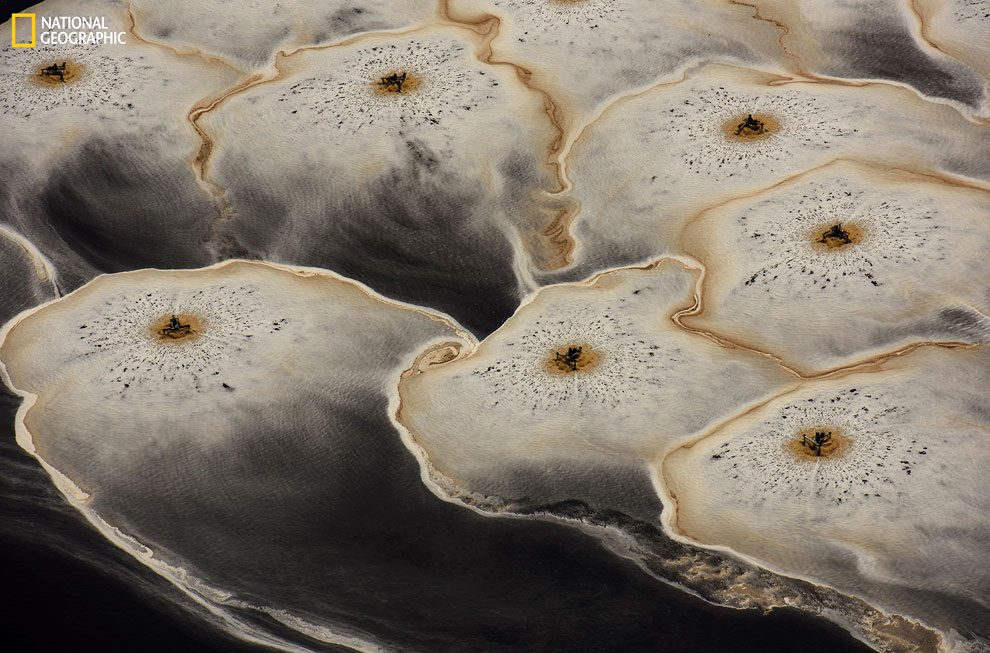
Waste from a paper mill is agitated by aerators, producing steam and foam, which are pushed by the wind. Clearwater Paper Reservoire, Lewiston, Idaho. Aerial Image (shot from a plane at 1,500 feet). (Photo and Caption by Jassen T./2016 National Geographic Nature Photographer of the Year)
Razed paradise
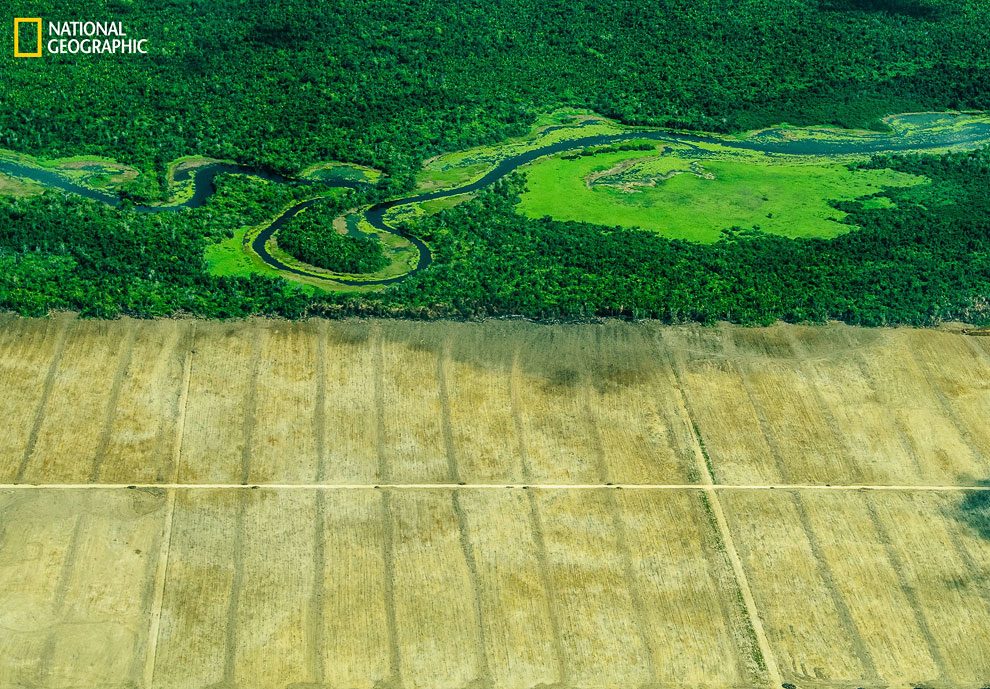
I was wrong to think that the trip between Belize and Guatemala would be a succession of idyllic landscapes. A few minutes later from take off, the view through the windows revealed me sharply the real situation of tropical forests in the world. Is too deep on the green the footprint of the Humanity, and very hard the border that divide the paradise from our worst actions in Earth. Image could be cut in the bottom half and show the intact forest. Unfortunately it would be a false reality. (Photo and Caption by Roberto Bueno/2016 National Geographic Nature Photographer of the Year)
Hawaiian Garden Spider
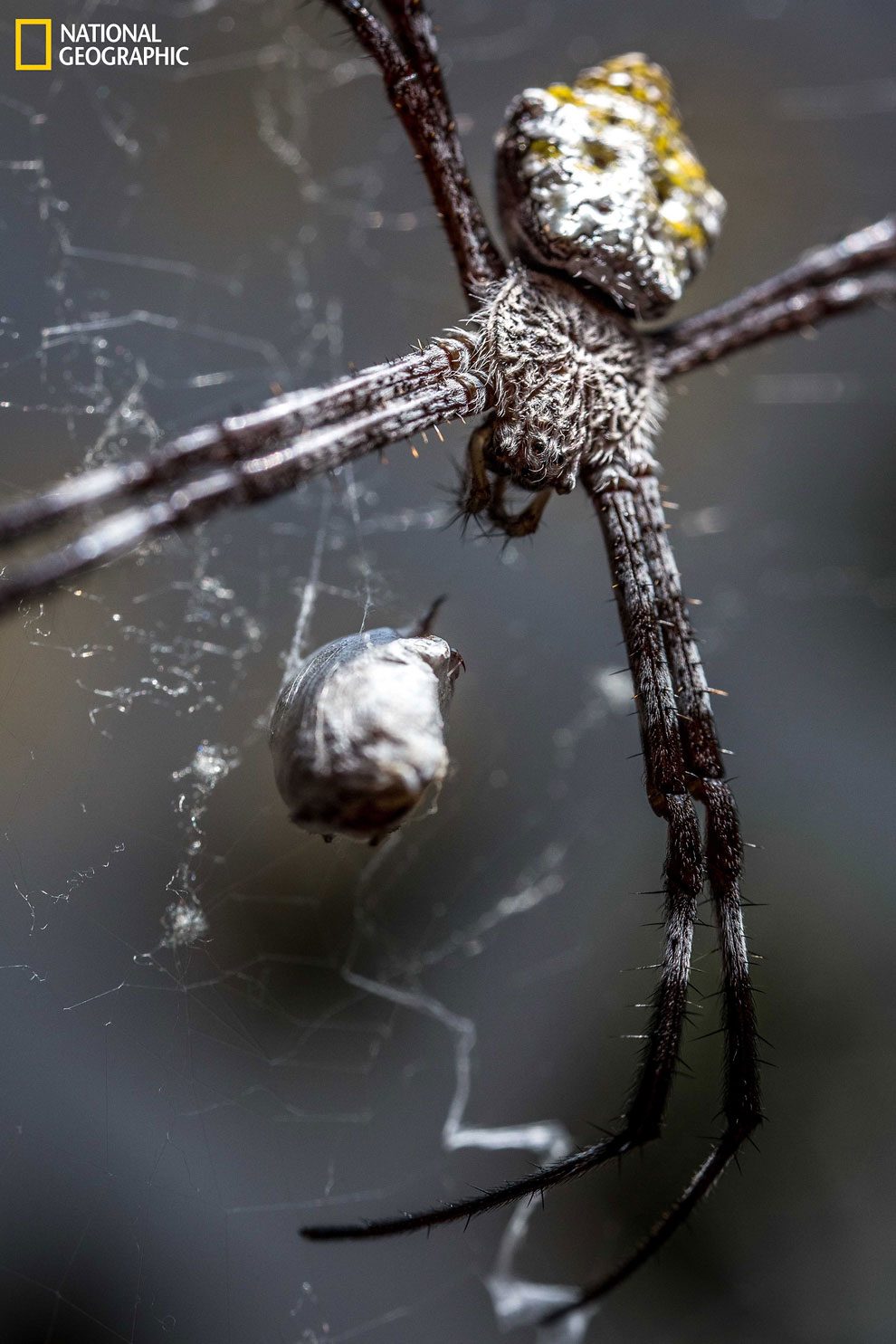
The Hawaiian garden spider has a fresh catch. (Photo and Caption by Mason Lake/2016 National Geographic Nature Photographer of the Year)
Lava Ocean Entry
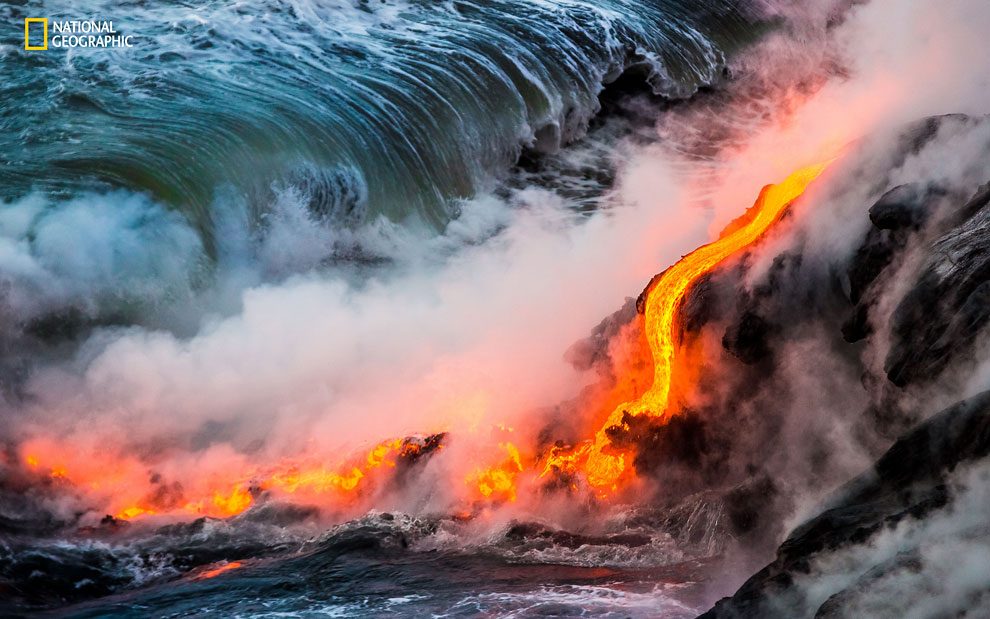
Lava ocean entry from the 2016 Kalapana lava flow on the Big Island of Hawaii. Watching new earth being formed is an amazing experience. Boiling ocean waves crashing into fresh lava & giving off clouds of steam along with scatter violent lava bursts from pressure release, creation of the earth is mesmerizing & powerful sight to see. (Photo and Caption by Mason Lake/2016 National Geographic Nature Photographer of the Year)
Confrontation

A White-tailed eagle swoops in on a Hokkaido red fox to set it straight for stealing a fish. This confrontation happened out on frozen Lake Fuhren in Hokkaido, Japan. The fox escaped with the fish. (Photo and Caption by Karen Prisby/2016 National Geographic Nature Photographer of the Year)
Climbing dreams!
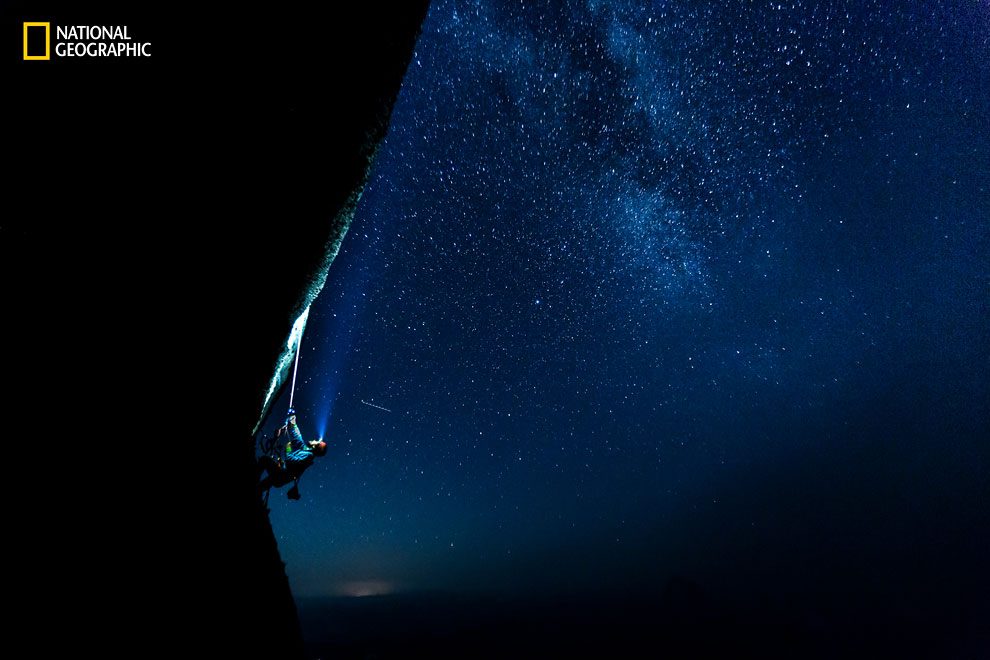
During the conquest of a new climbing route in the Pedra Baiana, Minas Gerais – Brazil. (Photo and Caption by Edson Vandeira/2016 National Geographic Nature Photographer of the Year)
Kalahari horizon
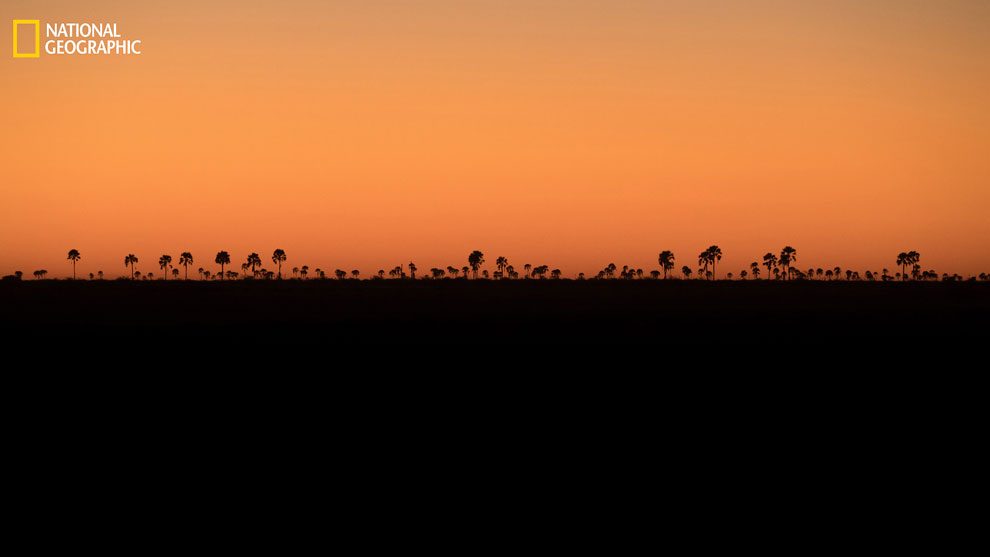
Kalahari sunset. I was on a horseback safari, so I didn’t carry a tripod. Taken with 8000 ISO. I actually loved this horizon. (Photo and Caption by M. Engelmann/2016 National Geographic Nature Photographer of the Year)
Volcanoes
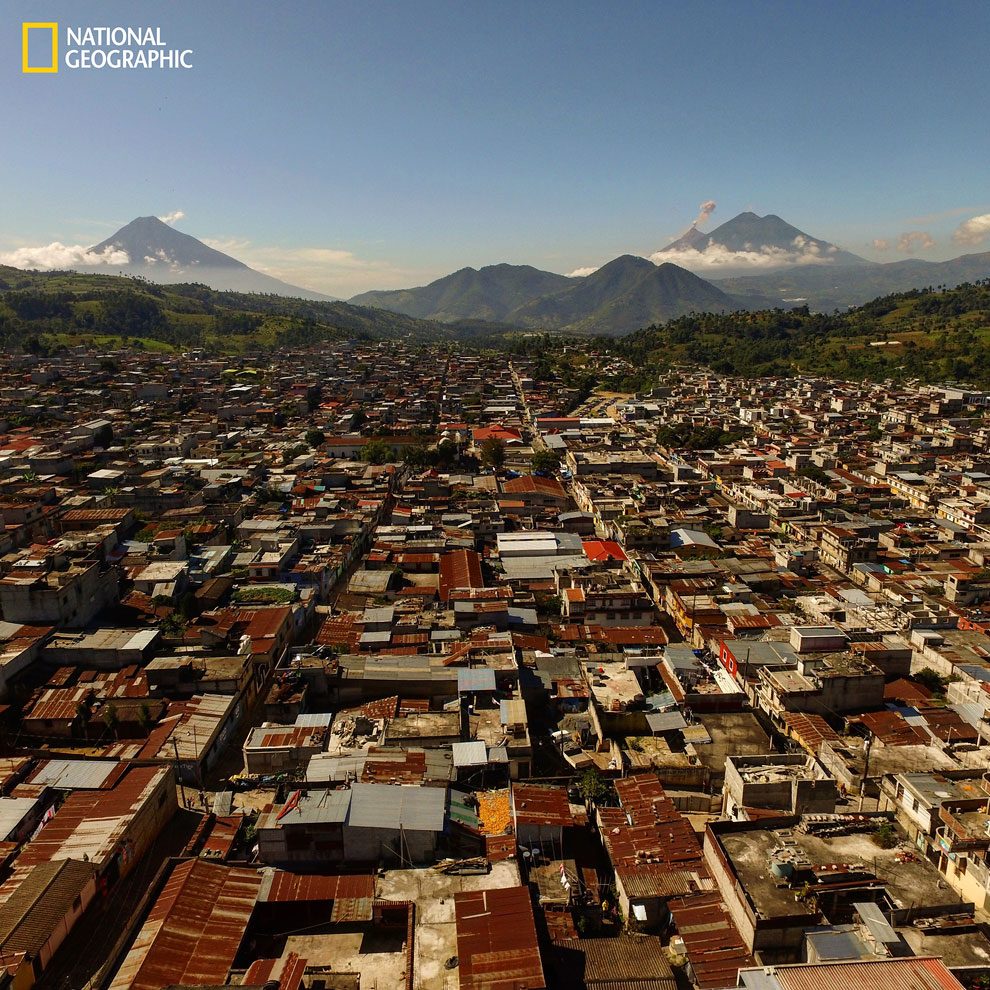
The city Sumpango in Guatemala with different volcanoes. One is even showing an eruption. (Photo and Caption by P. Flunkert/2016 National Geographic Nature Photographer of the Year)
From the shadows
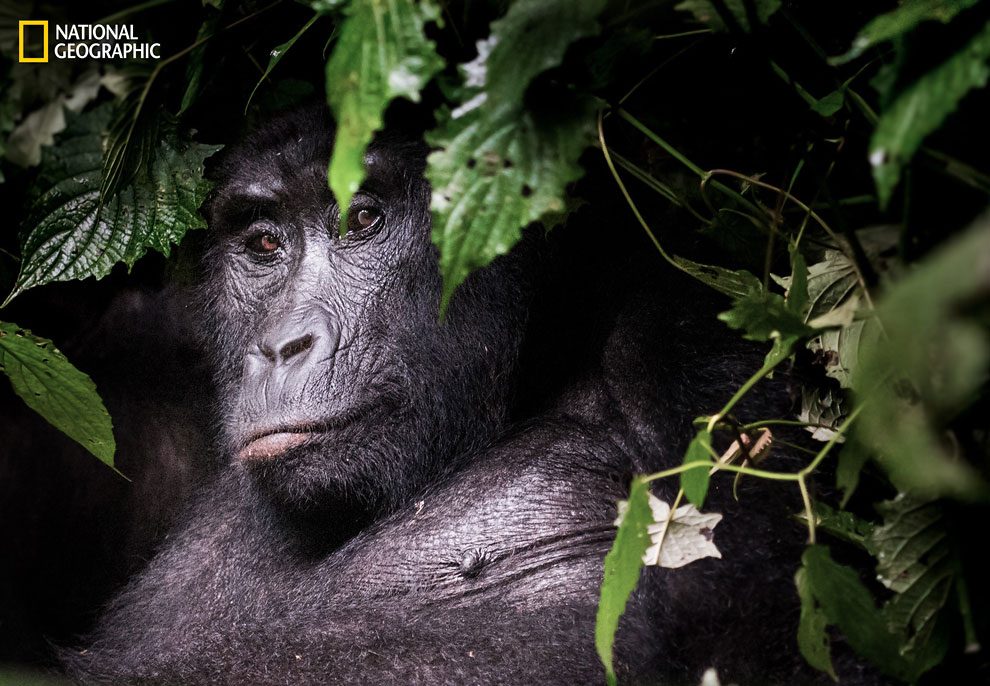
Hiking with the local guides, we stumbled upon this Mountain Gorilla peering curiously from the depths of the Impenetrable Forest. (Photo and Caption by Harry Lyndon-Skeggs/2016 National Geographic Nature Photographer of the Year)
The path less trodden
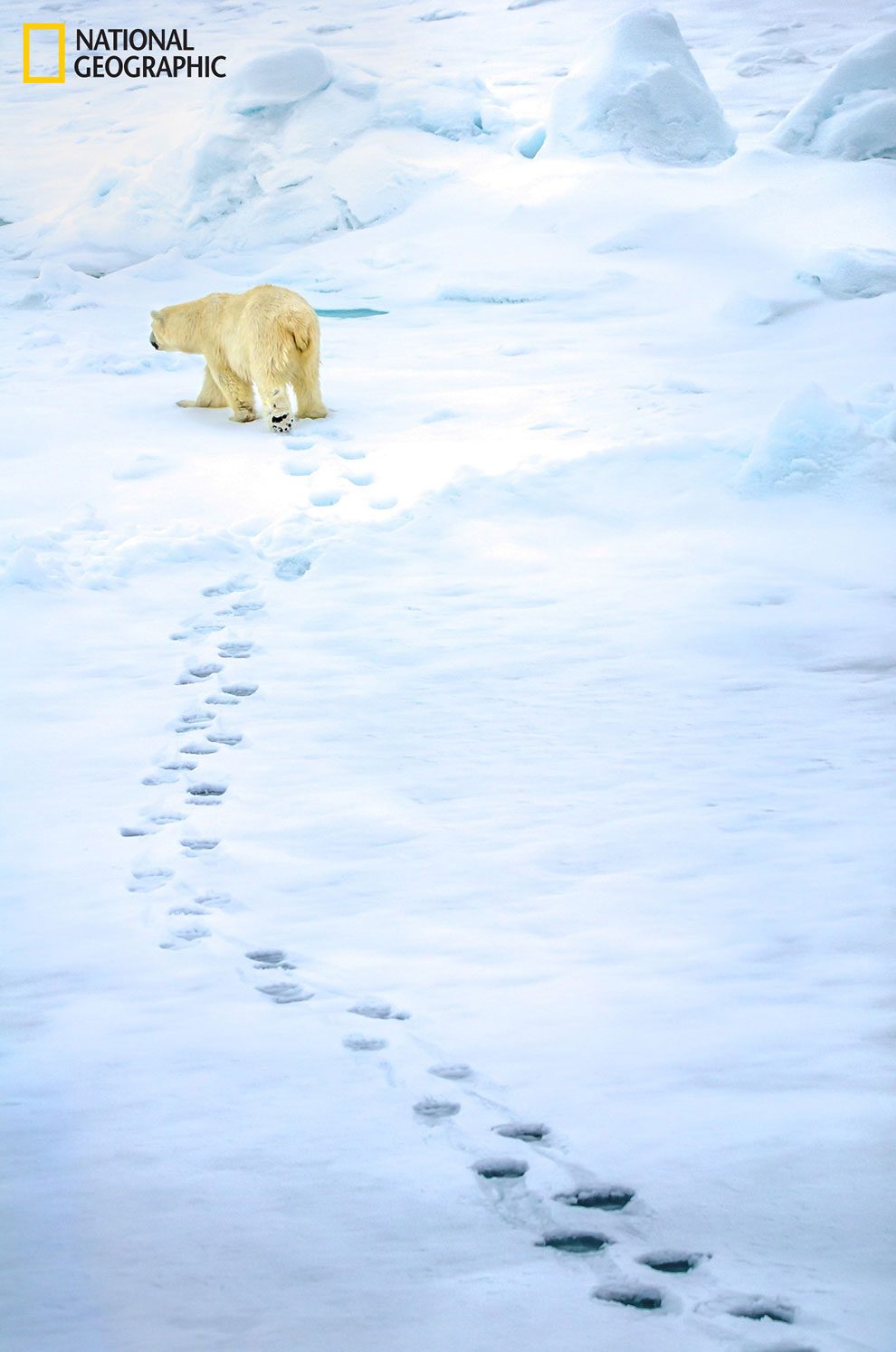
A polar bear ekes out a lonely existence in a barren world of ice. (Photo and Caption by Harry Lyndon-Skeggs/2016 National Geographic Nature Photographer of the Year)
Fading into the Sunset
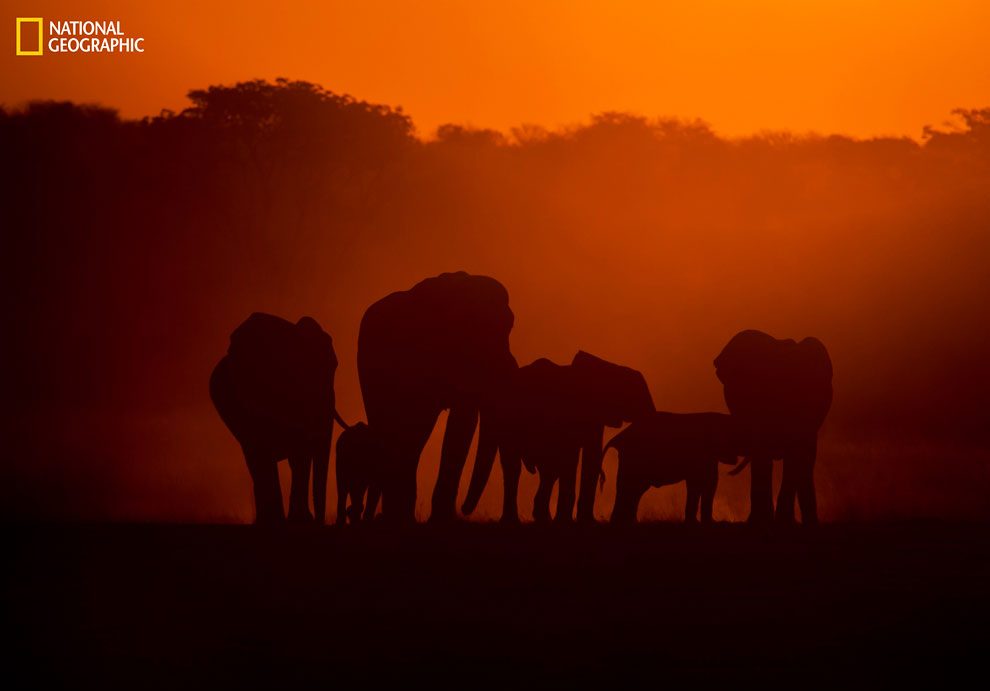
An elephant breeding herd enjoys a dust bath at sunset in Hwange National Park, Zimbabwe. The silhouette reminds us that this keystone species is in danger of localized extinction. An elephant is killed every 15 minutes. The Great Elephant Census found that one-third of the African Savannah elephants has been killed between 2007 and 2014 with approximately 352,000 remaining. (Photo and Caption by Jill Snyder/2016 National Geographic Nature Photographer of the Year)
War Horses
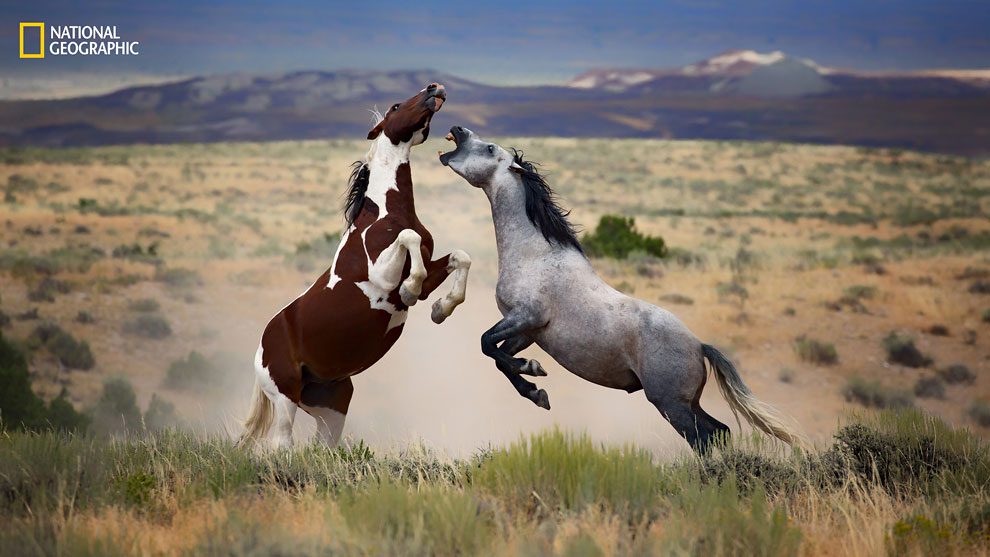
I had just arrived and found a small herd of these beautiful Colorado wild horses in their high desert environment, and set up my tripod to shoot what I thought would be peaceful grazing horses. Then, as if on cue, this pair started pawing the ground, and reared up and attacked each other. They snorted and stomped and lunged and bit: hair and hoofs and dirt flying everywhere. And, as soon as it started, it was over. Were they fighting or just horsing around? The Wild West lives on. (Photo and Caption by Cheryl Tyson/2016 National Geographic Nature Photographer of the Year)
Sunrise at Schwabacher Landing
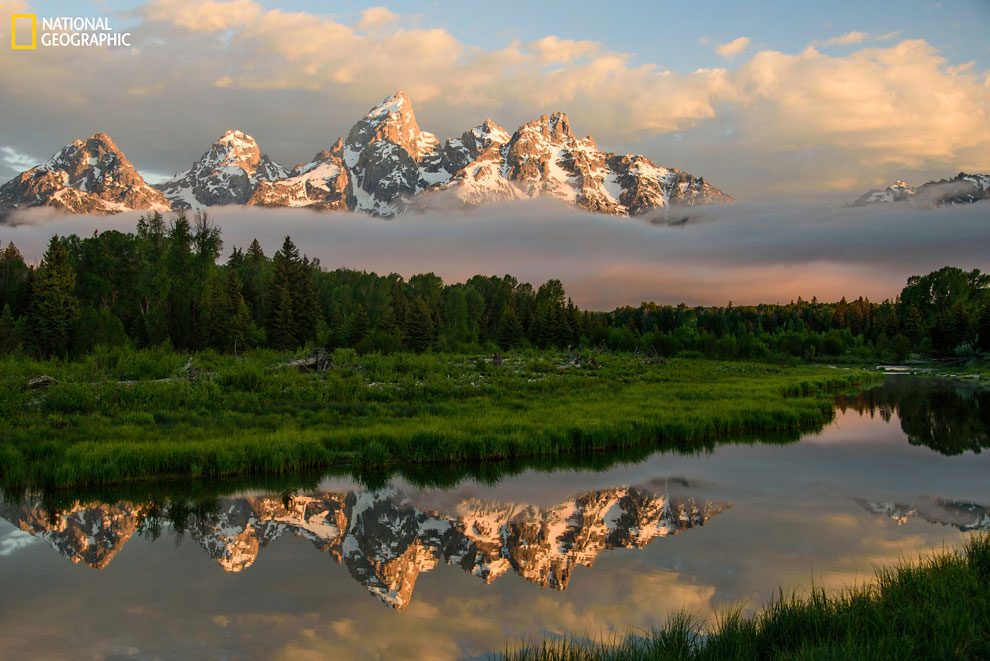
We arrived at approximately 4:30 a.m. It was VERY cold – approximately 38 degrees – and dark. We were layered up, and I wore fingerless gloves with hand warmers tucked inside. We set up our gear – tripods and remote shutter releases – and adjusted our settings and we waited. And waited. At approximately 5:30 a.m., the sun began to light the sky. As the majestic Tetons were revealed, tears streamed down my face. I have never in my life experienced such an overwhelming feeling. (Photo and Caption by Sherry Rosen/2016 National Geographic Nature Photographer of the Year)
Iceberg
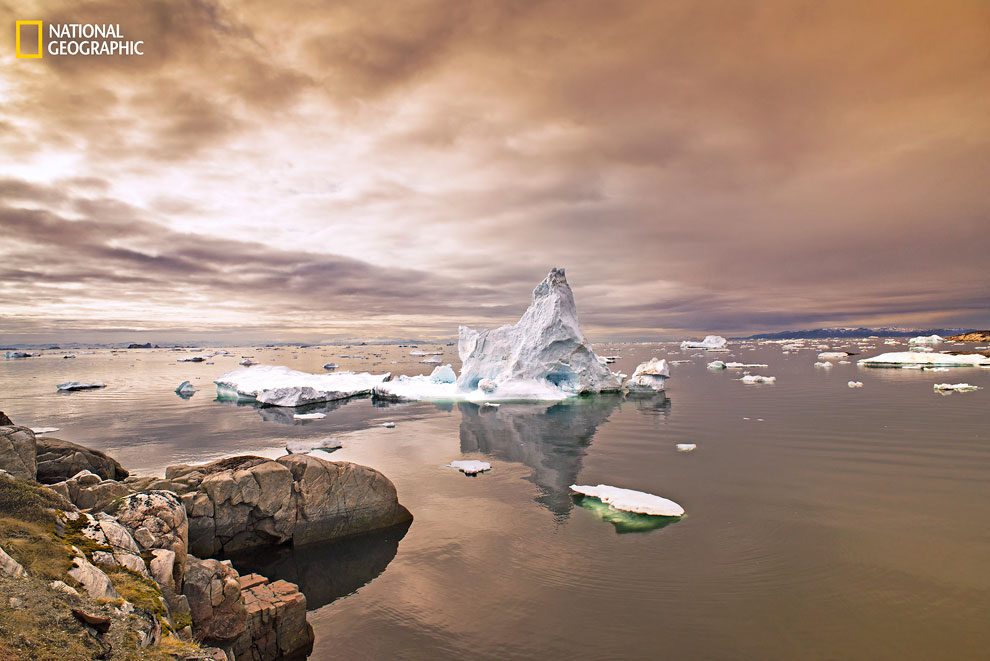
I took this photo in Ilulissat, Greenland in June 201 during my first trip to Greenland. The iceberg calved off of Greenland’s fastest moving glacier: Jakobshavn. It traveled through the Ilulissat Icefjord and eventually became stranded in Disko Bay. As the arctic is warming at incredible rates this glacier drains 6.5% of the Greenland ice sheet and produces roughly 10% of all of Greenland’s icebergs. (Photo and Caption by Barbara MacFerrin/2016 National Geographic Nature Photographer of the Year)